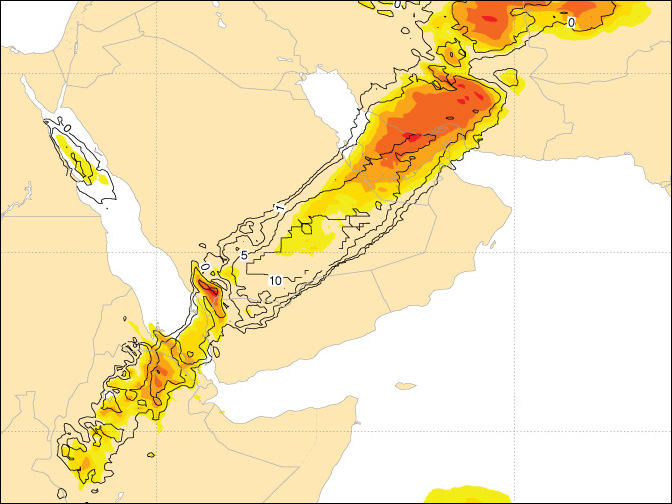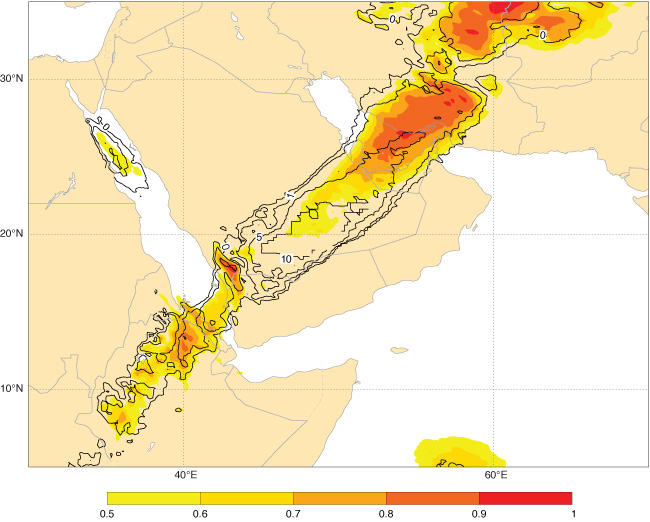

ECMWF is a long-time partner in the World Meteorological Organization’s capacity building work. It is now applying its expertise in numerical weather prediction to help assess operational capabilities in WMO member countries.
“Solid” partnership
Assisting the WMO was one of ECMWF’s founding objectives and still holds an important place in the Centre’s current ten-year Strategy, with an explicit commitment to support training and capacity building in WMO member states. This partnership ranges from providing essential data to WMO members free of charge to supporting fellowships and projects to improve severe weather forecasting in developing countries.
Mr Abdoulaye Harou from the WMO said: “The WMO and ECMWF’s partnership in the area of capacity development has been solid over the years, particularly in supporting the Severe Weather Forecasting Demonstration Project (SWFDP) in least developed countries and small island developing states.”
More than 50 countries are currently involved in the SWFDP: in Southern and Eastern Africa, in the Bay of Bengal, Southeast Asia and Central Asia and the Southwest Pacific areas. There are plans to extend it to West Africa and the Caribbean.
The SWFPD uses the cascading forecasting process, moving high-value information from global prediction centres to regional hubs, and then down to national meteorological centres.
This enables the production of more accurate and timely forecasts and warnings of hydrometeorological hazards. It helps build capacity and expertise in developing countries, which are given access to sophisticated forecast products from global producing centres such as ECMWF.
Assessing operational capabilities
In March, Dr Anna Ghelli, the Centre’s international liaison officer, joined the WMO on a visit to Saudi Arabia’s national meteorological service as part of an NWP expert team.
“The participation of ECMWF was important as Saudi Arabia has embarked on a major modernisation project that includes the development of NWP capacity,” Mr Harou said.
Saudi Arabia is a WMO member and has been connected to the RMDCN network since 2005. ECMWF manages the RMDCN, which provides a computer network infrastructure for the meteorological community.
Saudi Arabia’s General Authority of Meteorology and Environmental Protection (GAMEP) had asked for advice in the areas of observations, climate services, public weather services, atmospheric research and environmental and numerical weather prediction (NWP, operational activities and research and development).
The visit came one year after GAMEP signed up to receive ECMWF data under a non-commercial licence specifically designed for WMO members.

The chart shows ECMWF’s Extreme Forecast Index (EFI, shading) and Shift of Tails (SOT, contours) for total precipitation from Monday, 13 February 2017 00 UTC, valid for Friday 17 February 00 UTC to Saturday 18 February 00 UTC. The high EFI values in the south-west of Saudi Arabia suggest a high risk of unusually large amounts of precipitation, while the high SOT values indicate that precipitation could be extreme compared to the region’s usual conditions. Flash floods did occur during this period in the Asir region in south-west Saudi Arabia, where one person was killed, ten were injured and hundreds were rescued.
For ECMWF, establishing contacts in new countries is an essential first step. Understanding work processes enables the Centre to advise on the data available and on which parameters would be useful, and to provide more effective support in general.
“The WMO values ECMWF’s sustained contribution in promoting the WMO programmes and activities,” Mr Harou said.
